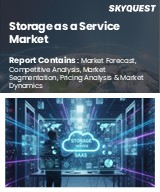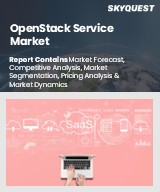
|
시장보고서
상품코드
1844393
가상 프라이빗 클라우드 시장 : 서비스 유형별, 업계별 - 세계 예측(2025-2032년)Virtual Private Cloud Market by Service Type, Industry Vertical - Global Forecast 2025-2032 |
||||||
가상 프라이빗 클라우드 시장은 2032년까지 CAGR 14.01%로 1,513억 2,000만 달러로 성장할 것으로 예측됩니다.
| 주요 시장 통계 | |
|---|---|
| 기준 연도 2024년 | 529억 8,000만 달러 |
| 추정 연도 2025년 | 605억 7,000만 달러 |
| 예측 연도 2032 | 1,513억 2,000만 달러 |
| CAGR(%) | 14.01% |
가상 프라이빗 클라우드(VPC) 기술은 현재 기업의 인프라 전략에서 핵심적인 역할을 하고 있으며, 퍼블릭 클라우드의 탄력성과 프라이빗 네트워크의 분리를 연결하고 제어 및 구성 가능한 네트워크 환경을 제공하고 있습니다. VPC는 안전한 멀티테넌트 구축, 하이브리드 클라우드 오버레이, 최신 마이크로서비스 및 데이터 집약적 워크로드를 지원하는 애플리케이션 인식 네트워킹을 구현하기 위한 기본 구성요소로 간주되고 있습니다. 따라서 의사결정자들은 지연시간, 보안 체계, 자동화 등 기술적 우선순위와 조달 유연성, 벤더 상호운용성 등 보다 광범위한 상업적 목적과 조화를 이루어야 합니다.
시간이 지남에 따라 기업들은 단순한 리프트 앤 시프트 전환에서 VPC 경계 내에서 클라우드 네이티브 아키텍처의 최적화에 초점을 맞추고 있습니다. 이러한 전환은 아이덴티티 기반 액세스 제어, 워크로드 세분화, 관찰 가능성 등의 고려 사항을 증가시킵니다. 이에 따라 운영팀은 인프라-as-code 방식을 채택하여 네트워크 프로비저닝과 정책 적용을 자동화함으로써 인적 오류를 줄이고 가치 실현 시간을 단축하고 있습니다. 따라서 리더는 전술적 전환 요구와 전략적 현대화의 균형을 맞추고, 거버넌스, 비용 관리, 성과 목표가 서로 연계될 수 있도록 해야 합니다.
또한, 규제 및 데이터 주권에 대한 요구 사항은 VPC 아키텍처 선택에 계속 영향을 미치고 있습니다. 조직이 지리적으로 확장하고 다양한 데이터 유형을 인제스트함에 따라, 컴플라이언스 및 감사 가능성을 위해 VPC 배포를 세밀하게 제어할 수 있는 설계가 점점 더 많이 등장하고 있습니다. 즉, VPC는 정적인 네트워크 구성에서 안전하고 확장 가능하며 탄력적인 클라우드 네이티브 운영을 지원하는 프로그래밍 가능한 정책 기반 플랫폼으로 진화하고 있습니다.
가상 프라이빗 클라우드 도입, 민첩성, 보안을 재구축하는 네트워크 아키텍처, 애플리케이션 딜리버리, 운영 모델의 전략적 변화
가상 프라이빗 클라우드 도입 환경은 애플리케이션의 현대화, 네트워크의 가상화, 분산 컴퓨팅의 패턴에 따라 크게 변화하고 있습니다. 컨테이너 및 서버리스 컴퓨팅과 같은 클라우드 네이티브 기술은 팀의 연결성과 정책 제어를 설계하는 방식을 바꾸고 있으며, 엣지 컴퓨팅과 임베디드 AI 워크로드는 프로세싱을 사용자와 디바이스에 더 가깝게 가져오고 있습니다. 그 결과, 네트워크 설계는 모놀리식 아키텍처에서 인텐트 기반 정책, 동적 라우팅, 세분화된 세분화를 우선시하는 소프트웨어 정의 오버레이로 전환되고 있습니다.
동시에 보안 패러다임은 암묵적인 네트워크 신뢰를 전제로 하지 않는 제로 트러스트 모델과 아이덴티티 퍼스트 모델로 전환되고 있습니다. 이러한 변화는 아이덴티티 및 액세스 관리, 마이크로 세분화, 그리고 횡적 움직임과 비정상적인 동작을 감지하기 위한 지속적인 모니터링의 통합을 요구하고 있습니다. 또한, 자동화 및 오케스트레이션 도구를 통해 컴플라이언스 및 운영 런북을 성문화하고, 구성의 드리프트를 줄여 인시던트 대응을 가속화할 수 있습니다. 이러한 변화를 종합하면, 사전 예방적 운영을 지원하는 상호운용성, API 기반 제어 및 원격 측정에 대한 중요성이 강조되고 있습니다.
마지막으로, 상업적 압력과 지속가능성에 대한 고려가 플랫폼 선택에 영향을 미치고 있습니다. 조직은 현재 VPC 솔루션을 성능과 비용뿐만 아니라 공급업체의 탄력성과 환경에 미치는 영향도 함께 평가하고 있습니다. 이러한 복합적인 힘으로 인해 아키텍트와 비즈니스 리더는 민첩성의 이점을 누리면서 견고한 거버넌스와 측정 가능한 운영 성과를 유지하기 위해 클라우드 네트워킹 전략을 지속적으로 재검토해야 합니다.
2025년 미국 관세 변화와 가상 프라이빗 클라우드의 조달, 공급망, 하드웨어 비용에 미치는 영향에 대한 누적 분석
2025년 관세 및 무역에 영향을 미치는 정책 조정으로 인해 가상 프라이빗 클라우드 도입에 대한 운영 및 조달 영향이 명확해졌습니다. 네트워킹 하드웨어, 특수 서버 구성요소 및 특정 반도체 클래스에 대한 수입 관세 인상으로 인해 온프레미스 장비 및 PoP(Point of Presence) 어플라이언스의 실질적 구매 비용이 상승했습니다. 이에 따라 조달팀은 공급업체 다변화를 가속화하고, 갑작스러운 가격 변동과 물류 혼란에 노출될 위험을 줄이기 위해 보다 장기적인 계약으로 보호받기를 원했습니다. 그 결과, 기업들은 예산과 공급의 제약을 관리하기 위해 자본 계획을 조정하고, 가능한 경우 장비의 갱신 주기를 연장했습니다.
또한, 공급망 마찰은 물류 가시성과 재고 전략의 중요성을 증가시켰습니다. 기술 리더들은 리드 타임을 단축하기 위해 탄력적인 제조 공간을 보유한 공급업체와 현지 조립 및 지역 배송 옵션을 제공하는 공급업체를 우선적으로 선택했습니다. 동시에 클라우드 서비스 제공업체와 매니지드 인프라 공급업체는 대량 구매, 운영 효율화, 현지 조달을 통해 비용 변동을 흡수할 수 있는 능력을 점점 더 강조하고 있으며, 워크로드 배치 위치 및 매니지드 모델로의 전환 여부에 대한 기업의 의사결정에 영향을 미치고 있습니다. 영향을 미치게 되었습니다.
수입 규제와 데이터 현지화가 교차하는 가운데, 규제와 컴플라이언스에 대한 고려가 더욱 중요해졌습니다. 아키텍처 팀은 규제 대상 워크로드를 위해 로컬에서 호스팅되는 인프라와 클라우드에서 호스팅되는 서비스의 균형을 맞추기 위해 하이브리드 접근 방식을 채택했습니다. 또한, 조직은 벤더 평가 기준을 재조정하여 총소유비용, 계약의 유연성, 공급망 투명성을 중요시하게 되었습니다. 이러한 변화는 무역 정책의 역학이 멀티 클라우드 및 하이브리드 환경에서의 기술적 의사결정과 운영 계획에 어떻게 파급되는지 명확하게 보여줍니다.
가상 프라이빗 클라우드 솔루션의 수요 패턴, 도입 선호도, 기능 우선순위, 서비스 유형 및 산업별 주요 세분화에 대한 인사이트 제공
강력한 세분화 분석을 통해 서비스 카테고리와 산업 분야의 기술 및 상업적 우선순위를 파악할 수 있습니다. 서비스 유형에 따라 컴퓨팅 서비스는 탄력성과 워크로드 이동성에 대한 요구를 촉진하고, 컨테이너 서비스, 서버리스 컴퓨팅, 가상 머신 인스턴스 등을 포함하며, 각기 다른 네트워킹과 보안을 기대할 수 있습니다. 관리 서비스는 운영 연속성과 가시성에 중점을 두고 백업 및 복구, 모니터링 및 분석, 오케스트레이션 및 자동화를 포괄합니다. 네트워크 서비스는 컨텐츠 전송 네트워크 기능, 로드 밸런싱, 가상사설망 솔루션을 통해 트래픽 분산 및 연결성을 처리합니다. 보안 서비스는 방화벽 관리, ID 및 액세스 관리, 침입 탐지 및 방어를 통해 경계와 워크로드의 무결성을 보호하고, 스토리지 서비스는 블록 스토리지, 파일 스토리지, 오브젝트 스토리지를 통해 영속성과 데이터 이동성을 제공합니다.
산업별로는 예상대로 우선순위가 다릅니다. 은행 및 금융 서비스에서는 엄격한 액세스 제어, 감사 가능성, 낮은 지연시간의 트랜잭션 처리가 중요시되며, 복잡한 VPC 피어링 및 프라이빗 연결 요구사항이 요구되는 경우가 많습니다. 에너지 및 유틸리티 사업에서는 운영의 탄력성과 산업 제어 시스템과의 통합이 요구되며, 결정론적 네트워킹과 세분화가 중요시됩니다. 정부 및 공공 기관은 주권과 컴플라이언스에 중점을 두고 있으며, 감사 추적 및 정책 시행을 위해 설계된 아키텍처가 필요합니다. 헬스케어 및 생명과학 분야는 데이터 기밀성, 스토리지 계층화 및 액세스 모델에 영향을 미치는 연구 협업 패턴을 우선시합니다. 정보 기술 및 통신 벤더는 멀티 테넌트 서비스를 지원하기 위해 프로그래밍 가능성과 상호연결 밀도를 추구하고, 제조 및 소매 업체는 VPC 토폴로지를 설계할 때 에지 처리 및 재고 동기화 요구 사항을 고려합니다.
실제로 이러한 세분화의 차이에 따라 벤더의 선택 기준과 도입 패턴도 달라질 수 있습니다. 예를 들어, 컴퓨팅 부하가 높은 컨테이너화된 애플리케이션의 경우 경량 네트워킹 오버레이와 동적 서비스 메시를 선호할 수 있으며, 규제가 엄격한 산업에서는 불변의 감사 로그와 하드웨어 또는 지역적 분리 옵션을 갖춘 아키텍처를 선택하는 경우가 많습니다. 아키텍처를 선택하는 경우가 많습니다. 따라서 효과적인 VPC 전략은 서비스 수준 특성을 산업별 컴플라이언스 및 성능 제약에 맞게 조정하고, 아키텍처 팀이 보안 제어, 연결 모델, 관리 도구의 적절한 조합을 우선순위에 둘 수 있도록 해야 합니다.
아시아태평양, 유럽, 중동 및 아프리카의 가상 프라이빗 클라우드 도입, 컴플라이언스 및 성능에 영향을 미치는 지역 역학
지역별 역학관계는 가상 프라이빗 클라우드의 전략과 구현에 큰 영향을 미치며, 지역마다 규제, 운영 및 상업적 고려사항이 다릅니다. 아메리카에서 기업들은 일반적으로 기술 혁신의 속도와 생태계 통합을 우선시하고, 프로그래밍 가능한 네트워킹 구조와 관리형 서비스의 보급을 추진하고 있습니다. 이 지역에서는 시장 출시 시간 단축과 유연한 계약 접근 방식을 중시하는 경우가 많지만, 동시에 데이터 처리와 국경 간 흐름에 영향을 미치는 주 및 연방 정부의 개인정보 보호 규제를 극복해야 합니다.
반면 유럽, 중동 및 아프리카는 데이터 주권, 프라이버시 규제, 지역 호스팅 옵션에 더 큰 비중을 두고 있습니다. 컴플라이언스 프레임워크와 국가 차원의 지침이 아키텍처 선택에 영향을 미치고 있으며, 기업들은 현지화, 감사 가능성, 국경 간 전송 메커니즘을 위한 명확한 컨트롤 플레인을 갖춘 VPC 배포를 설계하도록 권장하고 있습니다. 또한, 통신사업자의 클라우드 구상 및 각 지역의 클라우드 제공업체에 따라 다양한 상호연결 모델이 구축되어 있어 아키텍처 팀은 지연, 중복성, 규제와의 정합성 등을 평가해야 합니다.
아시아태평양은 성숙도가 모자이크처럼 엇갈리는 양상을 보이고 있으며, 대도시 시장에서는 첨단 엣지 구축, 통신사와의 제휴, 저지연 서비스를 지원하기 위한 고밀도 거점 구축을 추구하는 반면, 신흥 시장에서는 연결성 확대와 비용 중심 조달의 균형을 맞추고 있습니다. 이러한 차이는 벤더 생태계와 운영 모델에도 반영됩니다. 일부 팀은 하이퍼스케일로 관리되는 세계 풋프린트를 선호하는 반면, 다른 팀은 컴플라이언스 및 성능 목표를 달성하기 위해 로컬 호스팅과 리저널 클라우드 존을 결합한 하이브리드 아키텍처를 채택하기도 합니다. 전반적으로, 리더는 VPC의 설계를 지역 실정에 맞게 조정하고, 일관된 성능과 거버넌스를 보장하기 위해 규제 제약, 네트워크 토폴로지, 지역 파트너의 역량에 적극적으로 대처해야 합니다.
가상 프라이빗 클라우드 생태계에서 벤더의 포지셔닝 및 경쟁력 정의, 제품 혁신, 전략적 파트너십, 차별화된 오퍼링, 제품 혁신
가상 프라이빗 클라우드 생태계 벤더 간 기업 전략은 상호운용성, 매니지드 오퍼링, 플랫폼 확장성에 초점을 맞추고 있습니다. 제품팀은 기업이 개발자의 워크플로우에 네트워킹, 보안, 가시성을 통합할 수 있는 API 기반 컨트롤에 투자하여 애플리케이션 딜리버리를 가속화할 수 있도록 지원하고 있습니다. 인프라 공급업체, 시스템 통합업체, 네트워크 사업자 간의 전략적 파트너십은 지리적 범위를 확장하고 기업 구매자의 소비를 간소화하는 통합 서비스 번들을 생성합니다.
동시에 벤더들은 고급 트래픽 엔지니어링, 인라인 보안 서비스, 오케스트레이션 툴과의 긴밀한 통합 등 특화된 기능을 통해 차별화를 꾀하고 있습니다. 또한, 운영 부하를 줄이려는 기업의 수요를 반영하여 관리형 서비스를 우선시하는 기업도 있고, 기존 툴체인에 통합할 수 있는 모듈형 소프트웨어 구성요소에 초점을 맞추는 기업도 있습니다. 경량 서비스 메시, 텔레메트리 네이티브 오버레이, 특수 암호화 키 관리와 같은 틈새 기능을 제공하는 소규모 업체들도 혁신의 원천이 될 수 있습니다.
합병, 제휴, 시장 진입에 따른 협업이 경쟁의 역동성을 형성하고 있으며, 통합 오버헤드를 줄이고 효과적인 배포 패턴을 가속화할 수 있는 솔루션이 대세로 떠오르고 있습니다. 구매자는 명확한 운영 성숙도, 투명한 로드맵, 하이브리드 및 멀티 클라우드 토폴로지를 지원할 수 있는 능력을 보여주는 벤더를 선호합니다. 즉, 벤더 환경은 기술적 깊이와 실용적인 운영 지원, 그리고 기업의 거버넌스 니즈에 부합하는 명확한 가치 제안을 갖춘 벤더에게 보상을 제공하고 있습니다.
VPC의 내결함성 강화, 비용 최적화, 혁신 가속화를 위해 CIO, 클라우드 아키텍트, 보안팀이 취해야 할 행동 지침
클라우드 전략을 담당하는 리더는 VPC의 성과를 강화하기 위해 아키텍처, 조달, 보안 각 분야를 연계하는 실용적인 일련의 액션을 추구해야 합니다. 먼저, 일관된 프로비저닝과 신속한 롤백을 위해 네트워크 및 보안 정책을 버전 관리된 결과물로 성문화하여 일관된 프로비저닝과 신속한 롤백을 가능하게 합니다. 이를 통해 구성의 드리프트를 줄이고 인시던트 복구 시간을 단축할 수 있습니다. 둘째, 조직은 종합적인 운영 탄력성이라는 렌즈를 통해 하이브리드 및 관리형 소비 모델을 평가하고, 명확한 서비스 수준 약속과 공급망 투명성을 포함한 계약을 우선순위에 두어야 합니다.
셋째, 조달팀과 아키텍처 팀은 긴밀히 협력하여 무역 및 관세로 인한 혼란을 완화하기 위해 지역 조달 및 부품 대체 옵션과 같은 유연성을 계약에 포함시켜야 합니다. 넷째, 보안팀은 VPC의 컨트롤 플레인과 워크로드 에이전트의 텔레메트리를 통합한 ID 기반 액세스 제어 및 지속적인 모니터링의 채택을 가속화해야 합니다. 이러한 제어를 통해 개발자의 민첩성을 과도하게 제한하지 않으면서도 위협 탐지를 개선하고 횡적인 움직임을 억제할 수 있습니다.
마지막으로, 플랫폼의 변화가 측정 가능한 성과로 이어질 수 있도록 기술과 부문 간 거버넌스에 투자합니다. VPC의 설계 패턴을 관리하고, 가드레일을 구현하고, 턴키 템플릿을 제공하는 중앙 플랫폼 팀을 구성하여 분산된 팀이 컴플라이언스를 준수하는 경계를 유지하면서 혁신을 이룰 수 있도록 지원합니다. 이러한 조치를 통해 기업은 VPC 아키텍처의 이점을 실현하고, 운영상의 위험을 줄이며, 클라우드 이니셔티브가 기업 목표에 부합하도록 할 수 있습니다.
1차 인터뷰, 기술 검증, 공급망 분석, 정책 검토, 실증적 삼각측량 등을 통합하여 신뢰할 수 있는 인사이트를 제공하는 조사 기법
본 분석의 조사 방법은 여러 증거 스트림과 검증 메커니즘을 결합하여 균형 잡힌 실용적인 인사이트를 얻을 수 있었습니다. 인프라 및 보안 리더들과의 1차 인터뷰를 통해 아키텍처 선택, 조달 행동, 운영상의 트레이드오프에 대한 질적 배경을 제공했습니다. 공급망 분석에서는 공급업체 발자국, 리드타임 변동성, 조달 리스크 요인을 평가했습니다.
공공 정책 문서, 지역 규제 지침, 업계 백서는 컴플라이언스 및 현지화 관점을 전달하고, 실증적 원격 측정 및 사례 연구 분석은 성능, 가용성 및 관측가능성에 대한 운영 관점을 제공했습니다. 데이터 삼각측량 기술을 통해 결론이 단일 소스의 일화적 일화가 아닌 뒷받침되는 신호를 반영할 수 있도록 했습니다. 또한, 시나리오 기반 스트레스 테스트를 통해 조달 충격 및 지역적 연결 장애에 대한 일반적인 VPC 아키텍처의 복원력을 평가했습니다.
이 모든 과정에서 운영 및 조달 경험이 있는 실무자들의 동료 검토를 통해 실제 적용 가능성을 검증했습니다. 이 다중 방법론 접근 방식을 통해 독자는 문서화된 증거와 조사 방법론의 투명성을 활용하여 권장 사항을 조직의 상황에 맞게 조정하고 인사이트를 해석할 수 있습니다.
탄력적이고 안전한 가상 프라이빗 클라우드 도입을 위한 전략적 우선순위, 운영상의 필수 사항, 거버넌스 고려사항을 통합한 간결한 결론
결론적으로, 가상 프라이빗 클라우드의 아키텍처는 민첩성, 보안, 운영 관리의 균형을 이루는 프로그래머블 플랫폼으로 성숙해졌습니다. 성공적인 조직은 성문화된 정책, 상호 운용 가능한 도구, 전략적 공급업체와의 관계를 결합하여 하이브리드 및 멀티 클라우드 풋프린트 전반에 걸쳐 안전한 애플리케이션 배포를 지원하고 있습니다. 동시에 무역 정책 및 지역 규제 요구와 같은 외부 요인으로 인해 도입 일정과 비용의 예측 가능성을 유지하기 위해 조달의 엄격함과 공급망 투명성의 필요성이 강조되고 있습니다.
뛰어난 운영 능력은 프로비저닝과 실행을 자동화하고, 컨트롤 플레인과 워크로드에 관측가능성을 통합하고, 거버넌스 프레임워크와 개발자의 워크플로우를 일치시키는 능력에 달려 있습니다. 따라서 리더는 전략 목표를 명확하게 정의된 아키텍처 패턴과 반복 가능한 배포 템플릿으로 변환하는 기능 간 역량을 우선순위에 두어야 합니다. 이를 통해 팀은 리스크를 줄이고, 혁신을 가속화하며, 애플리케이션 딜리버리를 지연시키지 않고 컴플라이언스를 준수할 수 있습니다.
궁극적으로 VPC는 더 이상 단순한 네트워크 구축물이 아닌, 안전하고 확장 가능하며 적응력이 뛰어난 클라우드 네이티브 운영을 지원하는 전략적 플랫폼이 될 것입니다. VPC를 아키텍처, 조달, 거버넌스의 통합 구성요소로 취급하는 조직은 최신 클라우드 도입에 따른 복잡한 운영 실태를 관리하면서 가치를 창출하는 데 유리한 위치를 점할 수 있을 것으로 보입니다.
목차
제1장 서문
제2장 조사 방법
제3장 주요 요약
제4장 시장 개요
제5장 시장 인사이트
제6장 미국 관세의 누적 영향 2025
제7장 AI의 누적 영향 2025
제8장 가상 프라이빗 클라우드 시장 : 서비스 유형별
- 컴퓨팅 서비스
- 컨테이너 서비스
- 서버리스 컴퓨팅
- 가상 머신 인스턴스
- 관리 서비스
- 백업 및 복구
- 감시와 분석
- 오케스트레이션과 자동화
- 네트워크 서비스
- 컨텐츠 전송 네트워크
- 부하 분산
- 가상사설망
- 보안 서비스
- 방화벽 관리
- ID 및 액세스 관리
- 침입 감지와 방지
- 스토리지 서비스
- 블록 스토리지
- 파일 스토리지
- 오브젝트 스토리지
제9장 가상 프라이빗 클라우드 시장 : 업계별
- 은행 및 금융 서비스
- 에너지와 유틸리티
- 정부 및 공공 부문
- 헬스케어와 생명과학
- 정보기술과 통신
- 제조업
- 소매와 E-Commerce
제10장 가상 프라이빗 클라우드 시장 : 지역별
- 아메리카
- 북미
- 라틴아메리카
- 유럽, 중동 및 아프리카
- 유럽
- 중동
- 아프리카
- 아시아태평양
제11장 가상 프라이빗 클라우드 시장 : 그룹별
- ASEAN
- GCC
- EU
- BRICS
- G7
- NATO
제12장 가상 프라이빗 클라우드 시장 : 국가별
- 미국
- 캐나다
- 멕시코
- 브라질
- 영국
- 독일
- 프랑스
- 러시아
- 이탈리아
- 스페인
- 중국
- 인도
- 일본
- 호주
- 한국
제13장 경쟁 구도
- 시장 점유율 분석, 2024
- FPNV 포지셔닝 매트릭스, 2024
- 경쟁 분석
- Amazon.com, Inc.
- Microsoft Corporation
- Alphabet Inc.
- Alibaba Group Holding Limited
- International Business Machines Corporation
- Oracle Corporation
- Tencent Holdings Limited
- Huawei Investment & Holding Co., Ltd.
- VMware, Inc.
- DigitalOcean, LLC
The Virtual Private Cloud Market is projected to grow by USD 151.32 billion at a CAGR of 14.01% by 2032.
| KEY MARKET STATISTICS | |
|---|---|
| Base Year [2024] | USD 52.98 billion |
| Estimated Year [2025] | USD 60.57 billion |
| Forecast Year [2032] | USD 151.32 billion |
| CAGR (%) | 14.01% |
Virtual Private Cloud (VPC) technology now occupies a central role in enterprise infrastructure strategy, providing a controlled and configurable network environment that bridges public cloud elasticity with private network isolation. Organizations increasingly treat VPCs as foundational building blocks for secure multi-tenant deployments, hybrid cloud overlays, and application-aware networking that supports modern microservices and data-intensive workloads. As a result, decision-makers must reconcile technical priorities such as latency, security posture, and automation with broader commercial objectives including procurement flexibility and vendor interoperability.
Over time, enterprises have shifted focus from simple lift-and-shift migrations to optimizing cloud-native architectures within VPC boundaries. This transition elevates considerations like identity-driven access controls, workload segmentation, and observability. In turn, operations teams are adopting infrastructure-as-code practices, automating network provisioning and policy enforcement to reduce human error and accelerate time to value. Consequently, leaders must balance tactical migration needs with strategic modernization, ensuring that governance, cost discipline, and performance objectives move in tandem.
Furthermore, regulatory and data sovereignty requirements continue to influence VPC architecture choices. As organizations expand geographically and ingest diverse data types, they increasingly design VPC deployments with granular control points for compliance and auditability. In short, the VPC has evolved from a static network construct into a programmable, policy-driven platform that underpins secure, scalable, and resilient cloud-native operations.
Strategic shifts in network architecture, application delivery, and operational models that are reshaping Virtual Private Cloud adoption, agility, and security
The landscape for Virtual Private Cloud adoption is undergoing transformative shifts driven by application modernization, network virtualization, and distributed compute patterns. Cloud-native technologies such as containers and serverless compute are changing how teams design connectivity and policy controls, while edge computing and embedded AI workloads push processing closer to users and devices. As a result, network design has moved from monolithic architectures to software-defined overlays that prioritize intent-based policies, dynamic routing, and granular segmentation.
Concurrently, security paradigms are shifting toward zero trust and identity-first models that assume no implicit network trust. This shift compels integration between identity and access management, microsegmentation, and continuous monitoring to detect lateral movement and anomalous behavior. In addition, automation and orchestration tools enable teams to codify compliance and operational runbooks, thus reducing configuration drift and accelerating incident response. Taken together, these changes increase the emphasis on interoperability, API-driven controls, and telemetry that supports proactive operations.
Finally, commercial pressures and sustainability considerations are influencing platform choices. Organizations now evaluate VPC solutions not only for performance and cost, but also for supplier resilience and environmental impact. These combined forces mean that architects and business leaders must continuously reassess their cloud networking strategies to capture the benefits of agility while maintaining robust governance and measurable operational outcomes.
Cumulative analysis of United States tariff shifts in 2025 and their effects on procurement, supply chains, hardware costs for Virtual Private Cloud
Policy adjustments affecting tariffs and trade in 2025 have created discernible operational and procurement implications for Virtual Private Cloud deployments. Increased import duties on networking hardware, specialized server components, and certain semiconductor classes have raised the effective acquisition cost of on-premises equipment and point-of-presence appliances. In response, procurement teams accelerated supplier diversification and sought longer-term contractual protections to reduce exposure to sudden price changes and logistics disruption. Consequently, organizations adjusted capital planning and extended equipment refresh cycles where feasible to manage budgetary and supply constraints.
Moreover, supply chain friction amplified the importance of logistics visibility and inventory strategies. Technology leaders prioritized suppliers with resilient manufacturing footprints and those that offered local assembly or regional distribution options to reduce lead times. At the same time, cloud service providers and managed infrastructure vendors increasingly emphasized their ability to absorb cost volatility through bulk purchasing, operational efficiencies, and localized sourcing, thereby influencing enterprise decisions about where to place workloads and whether to shift to managed models.
Regulatory and compliance considerations became more salient as import controls intersected with data localization mandates. Architecture teams adopted hybrid approaches that balanced locally hosted infrastructure for regulated workloads with cloud-hosted services for burstable capacity. In addition, organizations recalibrated vendor evaluation criteria to emphasize total cost of ownership, contractual flexibility, and supply chain transparency. These changes underscore how trade policy dynamics can ripple through technology decisions and operational planning across multi-cloud and hybrid environments.
Critical segmentation insights across service types and industry verticals illuminating demand patterns, deployment preferences, and functional priorities for Virtual Private Cloud solutions
Robust segmentation analysis reveals distinct technical and commercial priorities across service categories and industry verticals, which in turn shape how organizations adopt and operate Virtual Private Cloud environments. Based on service type, compute services drive demands for elasticity and workload portability and include container services, serverless compute, and virtual machine instances, each with different networking and security expectations. Management services focus on operational continuity and observability and encompass backup and recovery, monitoring and analytics, and orchestration and automation, while networking services address traffic distribution and connectivity through content delivery network capabilities, load balancing, and virtual private network solutions. Security services protect perimeter and workload integrity with firewall management, identity and access management, and intrusion detection and prevention, and storage services deliver persistence and data mobility via block storage, file storage, and object storage.
Across industry verticals, priorities diverge in predictable ways. Banking and financial services emphasize strict access controls, auditability, and low-latency transaction processing, which often drive complex VPC peering and private connectivity requirements. Energy and utilities require operational resilience and integration with industrial control systems, placing premium value on deterministic networking and segmentation. Government and public sector buyers focus on sovereignty and compliance, necessitating architectures designed for audit trails and policy enforcement. Healthcare and life sciences prioritize data confidentiality and research collaboration patterns that influence storage tiering and access models. Information technology and telecommunications vendors pursue programmability and interconnection density to support multi-tenant services, while manufacturing and retail sectors weigh edge processing and inventory synchronization needs when designing VPC topologies.
In practice, these segmentation distinctions lead to differentiated vendor selection criteria and deployment patterns. For example, compute-heavy applications in containerized form may favor lightweight networking overlays and dynamic service meshes, while regulated industries often select architectures with immutable audit logs and hardware or regional isolation options. As a result, effective VPC strategies must map service-level characteristics to industry-specific compliance and performance constraints, enabling architecture teams to prioritize the right mix of security controls, connectivity models, and management tooling.
Regional dynamics across the Americas, Europe, Middle East & Africa, and Asia-Pacific shaping Virtual Private Cloud adoption, compliance, and performance
Regional dynamics materially influence Virtual Private Cloud strategy and implementation, with different geographies presenting distinct regulatory, operational, and commercial considerations. In the Americas, organizations generally prioritize speed of innovation and ecosystem integration, driving widespread adoption of programmable networking constructs and managed services. This region often emphasizes rapid time to market and flexible contractual approaches, while also navigating state and federal privacy regulations that affect data handling and cross-border flows.
By contrast, Europe, Middle East & Africa exhibits a stronger focus on data sovereignty, privacy regulation, and regional hosting options. Compliance frameworks and national-level directives shape architectural choices, prompting enterprises to design VPC deployments with explicit control planes for localization, auditability, and cross-border transfer mechanisms. In addition, telco-cloud initiatives and regional cloud providers create varied interconnection models, which architecture teams must evaluate for latency, redundancy, and regulatory alignment.
Asia-Pacific presents a mosaic of maturity levels, where large urban markets pursue advanced edge deployments, telco partnerships, and dense points of presence to support low-latency services, while emerging markets balance connectivity expansion with cost-sensitive procurement. These differences translate into varied vendor ecosystems and operational models: some teams prefer hyperscale-managed footprints for global reach, whereas others adopt hybrid architectures that combine local hosting with regional cloud zones to meet compliance and performance goals. Overall, leaders must align VPC design with regional realities, proactively addressing regulatory constraints, network topology, and local partner capabilities to ensure consistent performance and governance.
Product innovation, strategic partnerships, and differentiated offerings that define vendor positioning and competitive dynamics within the Virtual Private Cloud ecosystem
Corporate strategies among vendors in the Virtual Private Cloud ecosystem display a clear emphasis on interoperability, managed offerings, and platform extensibility. Product teams are investing in API-driven controls that allow enterprises to embed networking, security, and observability into developer workflows, which supports faster application delivery. Strategic partnerships between infrastructure vendors, systems integrators, and network operators expand geographic reach and create integrated service bundles that simplify consumption for enterprise buyers.
At the same time, vendors differentiate through specialized capabilities such as advanced traffic engineering, inline security services, and tight integration with orchestration tooling. Some companies prioritize managed services to capture enterprise demand for operational offload, while others focus on modular software components that enterprises can integrate into existing toolchains. Innovation also originates from smaller entrants that deliver niche capabilities-such as lightweight service meshes, telemetry-native overlays, or specialized encryption key management-that later influence broader platform roadmaps.
Mergers, alliances, and go-to-market collaborations are shaping competitive dynamics, with an observable trend toward solutions that reduce integration overhead and accelerate validated deployment patterns. Buyers respond by favoring vendors that demonstrate clear operational maturity, transparent roadmaps, and the ability to support hybrid and multi-cloud topologies. In short, the vendor landscape rewards those that combine technical depth with pragmatic operational support and clear value propositions aligned to enterprise governance needs.
Actionable recommendations for CIOs, cloud architects, and security teams to strengthen VPC resilience, optimize costs, and accelerate innovation
Leaders responsible for cloud strategy should pursue a pragmatic set of actions that align architecture, procurement, and security disciplines to strengthen VPC outcomes. First, teams should codify networking and security policies in version-controlled artifacts to enable consistent provisioning and fast rollback. This practice reduces configuration drift and speeds incident remediation, while also improving auditability for compliance reviews. Second, organizations should evaluate hybrid and managed consumption models through the lens of total operational resilience, prioritizing arrangements that include clear service-level commitments and supply chain transparency.
Third, procurement and architecture teams must collaborate closely to embed flexibility into contracts, including options for regional sourcing and component substitution to mitigate trade or tariff-induced disruptions. Fourth, security teams should accelerate adoption of identity-driven access controls and continuous monitoring that integrates telemetry from the VPC control plane and workload agents. These controls improve threat detection and contain lateral movement without unduly restricting developer agility.
Finally, invest in skills and cross-functional governance to ensure that platform changes translate into measurable outcomes. Establishing a central platform team to govern VPC design patterns, enforce guardrails, and provide turnkey templates enables distributed teams to innovate while remaining within compliant boundaries. Taken together, these actions help organizations realize the benefits of VPC architectures while reducing operational risk and aligning cloud initiatives with enterprise objectives.
Methodology integrating primary interviews, technical validation, supply chain analysis, policy review, and empirical triangulation to deliver credible insights
The research methodology for this analysis combined multiple evidence streams and validation mechanisms to ensure balanced, actionable insights. Primary interviews with infrastructure and security leaders provided qualitative context on architecture choices, procurement behavior, and operational trade-offs. Technical validation exercises and vendor briefings clarified feature sets, integration models, and typical deployment patterns, while supply chain analysis assessed supplier footprints, lead time variability, and sourcing risk factors.
Public policy documents, regional regulatory guidance, and industry white papers informed the compliance and localization perspectives, and empirical telemetry and case study analysis contributed operational perspectives on performance, availability, and observability. Data triangulation techniques ensured that conclusions reflect corroborated signals rather than single-source anecdotes. In addition, scenario-based stress testing evaluated the resilience of common VPC architectures under procurement shocks and regional connectivity failures.
Throughout the process, findings underwent peer review by practitioners with operational and procurement experience to validate practical applicability. This multi-method approach allows readers to interpret insights with confidence, using the documented evidence and methodological transparency to adapt recommendations to their organizational context.
Concise conclusion synthesizing strategic priorities, operational imperatives, and governance considerations for resilient and secure Virtual Private Cloud adoption
In conclusion, Virtual Private Cloud architectures have matured into programmable platforms that balance agility, security, and operational control. Organizations that succeed combine codified policy, interoperable tooling, and strategic supplier relationships to support secure application delivery across hybrid and multi-cloud footprints. At the same time, external factors such as trade policy and regional regulatory demands underscore the need for procurement rigor and supply chain transparency to preserve deployment timelines and cost predictability.
Operational excellence depends on the ability to automate provisioning and enforcement, to embed observability across the control plane and workloads, and to align governance frameworks with developer workflows. Leaders should therefore prioritize cross-functional capabilities that translate strategic objectives into well-defined architecture patterns and repeatable deployment templates. By doing so, teams can reduce risk, accelerate innovation, and maintain compliance without slowing application delivery.
Ultimately, the VPC is no longer merely a network construct; it is a strategic platform that underpins secure, scalable, and adaptable cloud-native operations. Organizations that treat the VPC as an integrated component of architecture, procurement, and governance will be better positioned to capture value while managing the complex operational realities that accompany modern cloud deployments.
Table of Contents
1. Preface
- 1.1. Objectives of the Study
- 1.2. Market Segmentation & Coverage
- 1.3. Years Considered for the Study
- 1.4. Currency & Pricing
- 1.5. Language
- 1.6. Stakeholders
2. Research Methodology
3. Executive Summary
4. Market Overview
5. Market Insights
- 5.1. Rising adoption of zero trust security frameworks in virtual private cloud environments
- 5.2. Integration of artificial intelligence for dynamic resource scaling in VPC deployments
- 5.3. Emergence of hybrid multi-cloud connectivity solutions for seamless VPC orchestration
- 5.4. Increasing demand for cost optimization tools in high-performance VPC instances
- 5.5. Expansion of edge computing services within virtual private cloud infrastructures
- 5.6. Advancements in automated compliance monitoring for regulated VPC workloads
- 5.7. Growing preference for containerized microservices architecture in secured VPC networks
6. Cumulative Impact of United States Tariffs 2025
7. Cumulative Impact of Artificial Intelligence 2025
8. Virtual Private Cloud Market, by Service Type
- 8.1. Compute Services
- 8.1.1. Container Services
- 8.1.2. Serverless Compute
- 8.1.3. Virtual Machine Instances
- 8.2. Management Services
- 8.2.1. Backup And Recovery
- 8.2.2. Monitoring And Analytics
- 8.2.3. Orchestration And Automation
- 8.3. Networking Services
- 8.3.1. Content Delivery Network
- 8.3.2. Load Balancing
- 8.3.3. Virtual Private Network
- 8.4. Security Services
- 8.4.1. Firewall Management
- 8.4.2. Identity And Access Management
- 8.4.3. Intrusion Detection And Prevention
- 8.5. Storage Services
- 8.5.1. Block Storage
- 8.5.2. File Storage
- 8.5.3. Object Storage
9. Virtual Private Cloud Market, by Industry Vertical
- 9.1. Banking And Financial Services
- 9.2. Energy And Utilities
- 9.3. Government And Public Sector
- 9.4. Healthcare And Life Sciences
- 9.5. Information Technology And Telecommunications
- 9.6. Manufacturing
- 9.7. Retail And Ecommerce
10. Virtual Private Cloud Market, by Region
- 10.1. Americas
- 10.1.1. North America
- 10.1.2. Latin America
- 10.2. Europe, Middle East & Africa
- 10.2.1. Europe
- 10.2.2. Middle East
- 10.2.3. Africa
- 10.3. Asia-Pacific
11. Virtual Private Cloud Market, by Group
- 11.1. ASEAN
- 11.2. GCC
- 11.3. European Union
- 11.4. BRICS
- 11.5. G7
- 11.6. NATO
12. Virtual Private Cloud Market, by Country
- 12.1. United States
- 12.2. Canada
- 12.3. Mexico
- 12.4. Brazil
- 12.5. United Kingdom
- 12.6. Germany
- 12.7. France
- 12.8. Russia
- 12.9. Italy
- 12.10. Spain
- 12.11. China
- 12.12. India
- 12.13. Japan
- 12.14. Australia
- 12.15. South Korea
13. Competitive Landscape
- 13.1. Market Share Analysis, 2024
- 13.2. FPNV Positioning Matrix, 2024
- 13.3. Competitive Analysis
- 13.3.1. Amazon.com, Inc.
- 13.3.2. Microsoft Corporation
- 13.3.3. Alphabet Inc.
- 13.3.4. Alibaba Group Holding Limited
- 13.3.5. International Business Machines Corporation
- 13.3.6. Oracle Corporation
- 13.3.7. Tencent Holdings Limited
- 13.3.8. Huawei Investment & Holding Co., Ltd.
- 13.3.9. VMware, Inc.
- 13.3.10. DigitalOcean, LLC



















